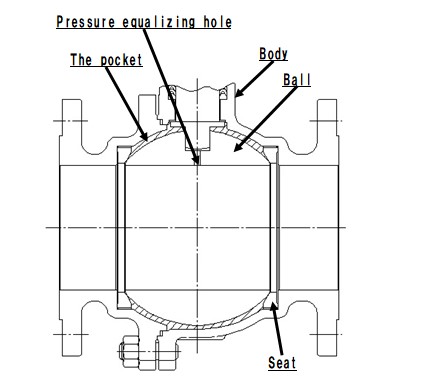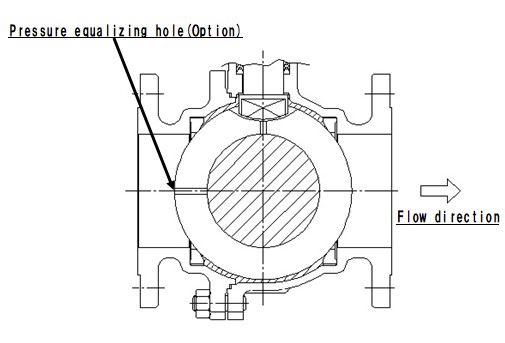Customer Support
【Q9】What is abnormal pressure rise ?
Also, please tell me how to deal with it.
What is abnormal pressure rise?
Abnormal pressure rise refers to a phenomenon in which the liquid in the pocket section of the main body is thermally expanded when it is heated by the temperature rise of the outside or the fluid in a state where the pocket section inside the main body is completely filled with liquid (incompressible fluid) and the pressure rises remarkably without the escape field of the expanded volume in the sealed container isolated from the flow path portion.
If the pressure rises abnormally, the ball and seats may be damaged, or parts of the seats may protrude and bite, resulting in increased torque, improper operation, or damage to the body. Abnormal pressure rise occurs when the valve is fully open or fully closed.
It does not occur at the intermediate position where liquid is not sealed in the pocket.
Countermeasures for abnormal pressure rise
◆Prevention when valve is fully opened:
In the standard specification, a pressure equalizing hole is provided in the stem groove of the ball, and since the pocket and the flow path are conducted and become the same pressure, no abnormal pressure boost is generated.
However, the pressure equalizing hole is assimilated with the pocket when the valve is fully closed, so the pressure equalizing hole does not work.

Fig. 1
◆Prevention when valve is fully closed:
A pressure equalizing hole is provided on the primary side of the ball when the valve is fully closed to provide continuity between the pocket and the primary side flow passage.
This makes it possible to prevent abnormal pressure reise. However,be cared that there is flow direction. If the pressure equalizing hole is placed on the secondary side, it is also effective to prevent abnormal pressure rise. However, this should be avoided because it will cause valve seat leakage.

Fig. 2




